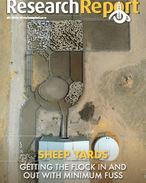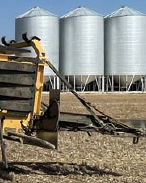This article is 5 years old. Images might not display.
The analysis, which looked at weather data from 1960 to 2010, shows a clear pattern of increasing drought across much of SA, notably over the state's most heavily inhabited areas and major catchments.
Led by UniSA's deputy vice Chancellor, Research and Innovation, professor Simon Beecham, the study draws on data from the most extensive climate change investigation ever undertaken in SA.
"We looked at data from 1960 to 2010 from every high-quality weather station in the state and there is a clear pattern, with drought increasing in the south of the State and over the Murray-Darling Basin, which is the food bowl of Australia," professor Beecham said.
The study, published in a Royal Meteorological Society journal, also indicates there has been significant long-term reductions in rainfall at the most problematic time of year, which is through autumn and winter.
"This is when water systems should be recharging and flows should be building up again," professor Beecham said.
"When it is dry during this time, as it was earlier this year, it is a problem for the state's water supplies, as winter rain is soaked up by the dry environment and less ends up in reservoirs."
South Australian rainfall has traditionally been linked to several climatic phenomena originating in the Pacific, Indian and Southern oceans, and professor Beecham suggests there has been a significant reduction in rainfall across the State in response to changes in these large?scale climatic modes.
"Much of the drought intensification can be linked to changes in two key climatic indices, known as Niño 3.4 and the dipole mode index," he said.
"As a result of changes to temperature and pressure over the Indian and Pacific oceans, South Australia's rainfall patterns are changing."
Despite the recent wet weather in SA, professor Beecham said the state, like much of Australia, has recently experienced drought conditions, and suggests many people who lived through the Millennium Drought may be underestimating the severity of the current conditions. For example, the Barossa Valley received only 11mm of rainfall over the first four months of 2019.
"The drought that afflicted Australia between 2001 and 2009 was the worst since Europeans arrived in this country, so people tend to compare the situation today to that and think perhaps things aren't so severe right now, when in truth, we're doing it pretty hard at the moment."






















